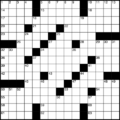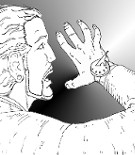Template:Selected anniversaries/January 18: Difference between revisions
From Gnomon Chronicles
No edit summary |
No edit summary |
||
| Line 1: | Line 1: | ||
<gallery> | <gallery> | ||
||532 – Nika riots in Constantinople fail. | |||
||1779 – Peter Mark Roget, English physician, lexicographer, and theologian (d. 1869) | ||1779 – Peter Mark Roget, English physician, lexicographer, and theologian (d. 1869) | ||
||Sir Edward Frankland, KCB, FRS FRSE (18 January 1825 | ||1788 – The first elements of the First Fleet carrying 736 convicts from Great Britain to Australia arrive at Botany Bay. | ||
||Sir Edward Frankland, KCB, FRS FRSE (b. 18 January 1825) was a British chemist. He was one of the originators of organometallic chemistry and introduced the concept of combining power or valence. An expert in water quality and analysis, he was a member of the second royal commission on the pollution of rivers, and studied London's water quality for decades. He also studied luminous flames and the effects of atmospheric pressure on dense ignited gas, and was one of the discoverers of helium. | |||
||1853 – Marthinus Nikolaas Ras, South African farmer, soldier, and gun-maker (d. 1900) | ||1853 – Marthinus Nikolaas Ras, South African farmer, soldier, and gun-maker (d. 1900) | ||
| Line 22: | Line 26: | ||
||1896 – An X-ray generating machine is exhibited for the first time by H. L. Smith. | ||1896 – An X-ray generating machine is exhibited for the first time by H. L. Smith. | ||
||1901 – Ivan Petrovsky, Russian mathematician and academic (d. 1973) | ||1901 – Ivan Petrovsky, Russian mathematician and academic (d. 1973) Nopic | ||
File:Septins in Saccharomyces cerevisiae.jpg|link=Transdimensional prison|1907: [[Transdimensional prison|''Saccharomyces Cerevisiae'' Prison]] unable to contain supervillain [[Fugitive Rubies]]. | |File:Septins in Saccharomyces cerevisiae.jpg|link=Transdimensional prison|1907: [[Transdimensional prison|''Saccharomyces Cerevisiae'' Prison]] unable to contain supervillain [[Fugitive Rubies]]. | ||
File:Jacob Bronowski.jpg|link=Jacob Bronowski (nonfiction)|1908: Mathematician, historian of science, theatre author, poet, and inventor [[Jacob Bronowski (nonfiction)|Jacob Bronowski]] born. | File:Jacob Bronowski.jpg|link=Jacob Bronowski (nonfiction)|1908: Mathematician, historian of science, theatre author, poet, and inventor [[Jacob Bronowski (nonfiction)|Jacob Bronowski]] born. | ||
||1911 – Eugene B. Ely lands on the deck of the USS Pennsylvania stationed in San Francisco Bay, the first time an aircraft landed on a ship. | |||
||Shoichi Sakata (b. 18 January 1911) was a Japanese physicist who was internationally known for theoretical work on the structure of the atom. He proposed the Sakata model, which was an early precursor to the quark model. After the end of World War II, he joined other physicists in campaigning for the peaceful uses of nuclear power. | ||Shoichi Sakata (b. 18 January 1911) was a Japanese physicist who was internationally known for theoretical work on the structure of the atom. He proposed the Sakata model, which was an early precursor to the quark model. After the end of World War II, he joined other physicists in campaigning for the peaceful uses of nuclear power. | ||
| Line 40: | Line 46: | ||
File:Enrico Fermi 1943-49.jpg|link=Enrico Fermi (nonfiction)|1937: [[Enrico Fermi (nonfiction)|Enrico Fermi]] invents new class of [[Gnomon algorithms]] which reverse effects of certain [[crimes against mathematical constants]]. | File:Enrico Fermi 1943-49.jpg|link=Enrico Fermi (nonfiction)|1937: [[Enrico Fermi (nonfiction)|Enrico Fermi]] invents new class of [[Gnomon algorithms]] which reverse effects of certain [[crimes against mathematical constants]]. | ||
File:Vuvuzela spectrum.png|link=Vuvuzela of Doom|1969: [[Vuvuzela of Doom]] announces world tour. | |File:Vuvuzela spectrum.png|link=Vuvuzela of Doom|1969: [[Vuvuzela of Doom]] announces world tour. | ||
||1995 – Adolf Butenandt, German biochemist and academic, Nobel Prize laureate (b. 1903) | ||1995 – Adolf Butenandt, German biochemist and academic, Nobel Prize laureate (b. 1903) | ||
||2008 – The Euphronios Krater is unveiled in Rome after being returned to Italy by the Metropolitan Museum of Art. | |||
||Herbert Reuben John Grosch (d. January 18, 2010) was an early computer scientist, perhaps best known for Grosch's law, which he formulated in 1950. Grosch's Law is an aphorism that states "economy is as the square root of the speed." | ||Herbert Reuben John Grosch (d. January 18, 2010) was an early computer scientist, perhaps best known for Grosch's law, which he formulated in 1950. Grosch's Law is an aphorism that states "economy is as the square root of the speed." Nopic | ||
||2013 – Jim Horning, American computer scientist and academic (b. 1942) | ||2013 – Jim Horning, American computer scientist and academic (b. 1942) | ||
</gallery> | </gallery> | ||
Revision as of 08:00, 16 January 2018
1878: Physicist and academic Antoine César Becquerel dies. He pioneered the study of electric and luminescent phenomena.
1908: Mathematician, historian of science, theatre author, poet, and inventor Jacob Bronowski born.
1923: crossword puzzle modified for use with Gnomon algorithm functions.
1937: Enrico Fermi invents new class of Gnomon algorithms which reverse effects of certain crimes against mathematical constants.




